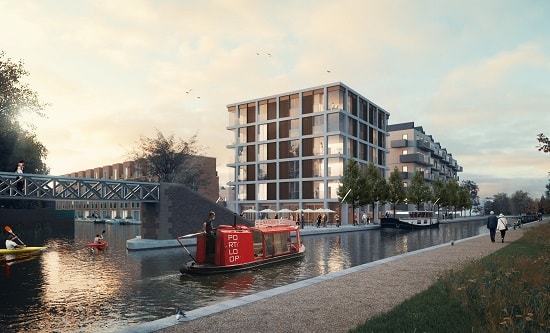
In 2017 there were 4,297 homes in Birmingham that had been empty for more than six months, and 10,000 across the West Midlands as a whole. Meanwhile the latest figures from the housing charity Shelter’s latest report show that homelessness in Birmingham has risen to 12,785 – up from just over 8,000 in 2005. Birmingham is ranked 25th nationally for homelessness, with one in every 88 people without a secure place to live.
How can this be happening? Why is all the building work going on in the city not only failing to lower the level of homelessness, but somehow seeing it go up? The reality is that as the crisis of capitalism intensifies, property in Britain has proved to be an extremely profitable outlet for international investment. As the price of land rises, so the only adequately profitable developments become high-priced apartments and executive homes. This trend is especially true in Birmingham as developments like the HS2 railway and the relocation of HSBC’s national headquarters have helped drive up the price of land in the city quicker than the national average. House prices in Ladywood, near the new HSBC offices and not far from where the Curzon Street HS2 station will be, rose 17% per cent last year, faster than any other post code in the country, according to Barclays.
Capitalist vultures already sense the money they could make pricing people out of homes. Already last year The Telegraph was urging businesses to take up ‘this fantastic investment opportunity’. In ‘Why it’s a good time to Invest in Birmingham’s housing market’ (24 November 2017), it openly reports on the scramble for profits: ‘Investors should focus on the city centre…Deutsche Bank and HSBC are among the organisations setting up head offices in Birmingham; and HM Revenue & Customs is relocating 4,000 staff to the city.’ Under the subheading ‘Luxury house building’, it added: ‘Developers are also clamouring to be part of the new-look Birmingham.’ These luxury developments, like the ‘masterplan for 1,150 canal side homes, a shopping centre and leisure facilities’ at the Iknield Port Loop site, are the only way to guarantee profitable return. Especially when it involves building on former industrial sites – so the only way that the government and private developers will get a return on the cost of digging up all that concrete and decontaminating whatever is underneath is to build these expensive, terraced town houses which cost about £365,000 each; nearly double the average terraced price of £165,000.
Meanwhile, ‘over the decade 2001 to 2011, there were large decreases in the proportion of social renting households… in parts of London, Manchester and Birmingham … there were decreases of over 40%’ (University of Liverpool 2018) Birmingham’s ‘regenerations’ are seeing social housing knocked down and replaced with ‘affordable housing’ that can be anything up to 80% of full market rent, like the new builds on the Lyndhurst estate in Erdington. Figures obtained in a Freedom of Information request show that of the 4,768 houses approved for development in 2016/17, just 425 approved were ‘lower cost’ housing. Only 131 will be council houses, and 24 of those will be for sale. This will not offset the decline of social rent properties overall. We have to build resistance and insist that shelter is a human right and not a commodity. Join us on our weekly stalls around the Birmingham area.
Joe Smith




